Interesting Facts
I have put all the interesting facts together. They are sectioned in Biology, Chemistry and Physics, and include the facts on the whole website, along with all those not featured. More and more will be added as time passes.
Biology
DNA & Cells
- A cell takes just 24 hours to form and then divide to form new cells. This is through either process of mitosis or meiosis.
- There are more than 20 different types of cells in our bodies, ranging from ones that make up our muscles and bones, to ones that fight infection, and ones we can reproduce from.
- People with Cystic Fibrosis are encouraged to stay six feet apart from another person with the same condition. This is due to certain types of bacteria that can be passed between them, as they are the only ones that carry these bacteria.
- The human egg, or ovum, is one of the largest cells in the human body. That said, it is still very small and measures approximately 0.12 mm in diameter. You would need 9 eggs to reach a millimetre in length, and if you laid 100 of them side by side they would sit on a line just 12 mm (1.2cm) long.
- Around 8% of our DNA is made up of ancient viruses that used to infect our body. This is the result of modern medicine enabling us to use vaccines to be able to quickly remove them.
- In 1983, the average life expectancy of someone with Down's Syndrome was 25 years old. Today, that life expectancy is now around 60.
- We inherit 23 chromosomes from our father, and we inherit 23 chromsomes from our mother. They are paired up to make 46 chromosomes.
- We each have two different genotypes, one from the mother and one from the father. This is called inheritance, and is because we receive a set of chromosomes and genetic data from each parent.
- All the cells in our body replicate over 11 months. So, the term "new year, new me" can be taken quite literally, as your body's cells will all be new.
- A film called Chaos Theory, released in 2008, describes a guy's relationship with his wife, where he then finds out he has Klinefelter syndrome, and that his child might not even be his child (as Klinefelter can make men infertile).
- A 7-year-old girl named Olivia is the only known case of Chromosome 6 deletion. She does not feel hunger, pain or need to sleep. In 2016, she was hit by a car and dragged nearly 100 feet, but felt no pain and emerged with only minor injuries.
- Quite distressing to have this happen, but a baby that has Patau's syndrome is unlikely to live past their first birthday, due to complications with the genetic disorder.
- Cats can be born with polydactyly. This gives them what looks like an opposable thumb, and means they could grip items and objects like a human can.
- Prokaryotic cells are the oldest class of organisms that live and have lived on Earth. They are some 4 billion years old, and along with Archaea make up 70% of the world's living organisms.
- There are several ways you can harvest stem cells: from your blood, from embryos, from bone marrow and also from your umbilical cord when you are born!
- Women with Turner syndrome are more susceptible to middle-ear infections, and once they have this, they are at greater risk of other infections, or hearing loss.
- There are tigers that have white stripes. These animals are the cause of a rare genetic trait due to a double recessive gene.
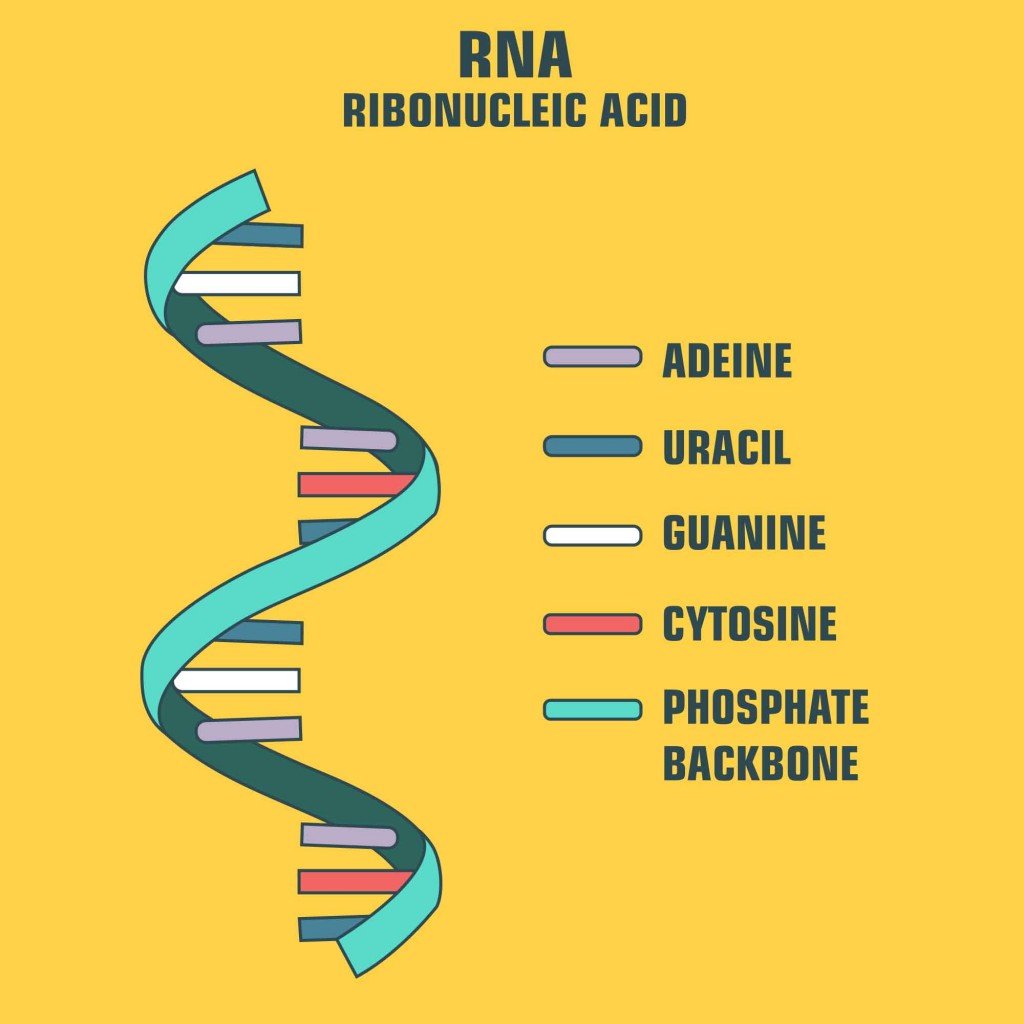
Diseases & their Medication
- As with a lot of medicines that are active, antibiotics have an expiry date. If the medicine is not taken before this expiry date, they may not be as effective, or can even cause you to get more ill by taking them.
- Louis Pasteur's work in microbiology saw many other scientists follow in his footsteps, and it inspired one Joseph Lister to publish a paper called Antiseptic Principle, which outlined his method to kill bacteria using phenol and carbolic acid.
- Bacteria and viruses are quite different, yet they both cause us to become ill. Although there are many differences, they still both contain DNA and enzymes to help them grow or replicate.
- The largest group of cancers in history from a single source happened at the time of the Chernobyl nuclear disaster, which happened in 1986. People today are still feeling the effects of this disaster.
- Some famous bacterial pathogens such as Salmonella and E. Coli are facultative anaerobes, meaning they prefer to 'breathe' oxygen, but can switch to fermentation in its absence.
- During some drug trials, you may not receive the actual drug on offer. They offer a non-drug pill or capsule otherwise known as a placebo.
- We often assume a vaccine will be given through injection. But this is not the case, as around 40% of them can be given orally, or even through the nasal passages.
- Malaria is not a contagious disease. It cannot be transmitted sexually, or through contact with another person.
- There are some 6 trillion trillion (6 and 30 zeros) microorganisms in the world. Put that into perspective, there are 7 billion people in the world.
- MRSA also has a non-hospital variant, called Community associated MRSA (Ca-MRSA), which starts like impetigo and hurts.
- A virus needs a host in order to reproduce. This is because it does not have the organelles inside them to help them replicate. Instead, they replicate using host cells, which are later destroyed.
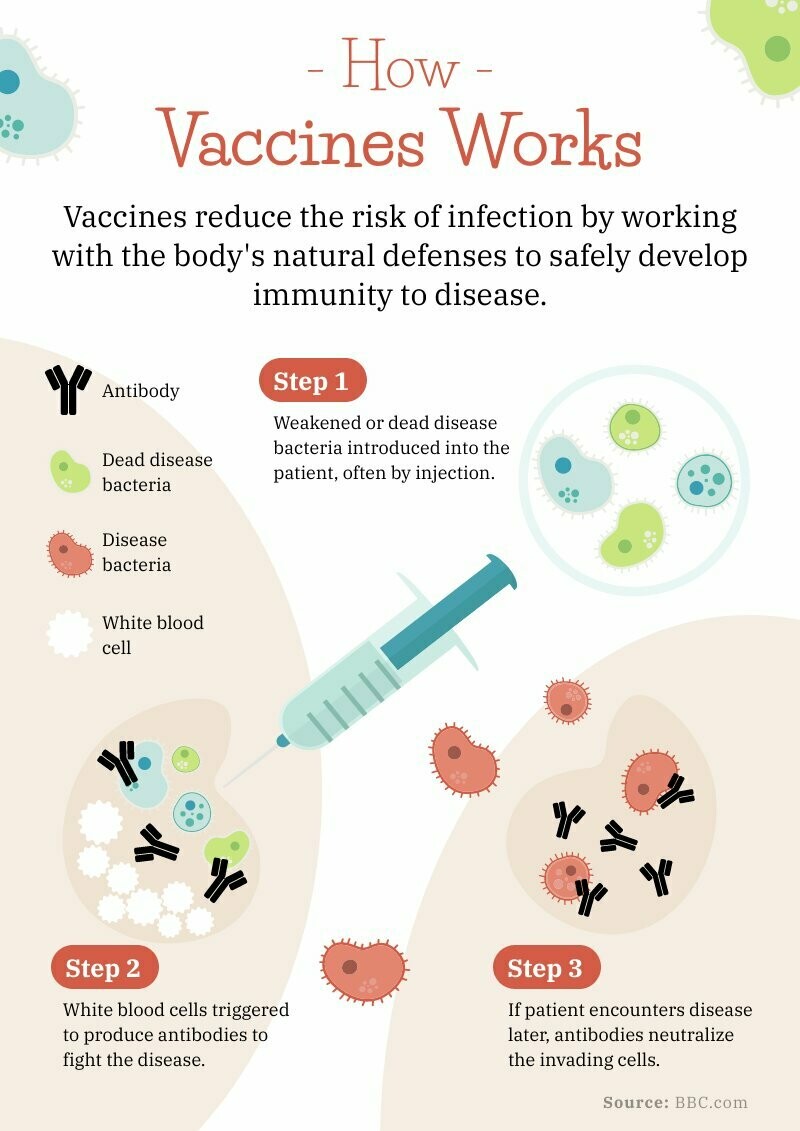
Organs & Systems
- The human brain is the fattiest part of our body. Over 60% of it is made of fat out of a total 3kg of weight.
- Wrinkles in the brain are an evolutionary trait - folds allow more brain matter to fit in the skull without increasing the skull's size.
- The blood cells in our body only have a shelf-life of 120 days.
- Women are more sensitive to the cold than men are. Women have a higher core temperature, but they have a lower metabolic rate than men, as they tend to have lesser muscle mass than men.
- The first national rollout of contraceptives in a country was in India in 1952. This included a shift from a calendar based method of contraception, to sterilisation and IUDs (a device like a coil).
- The name diabetes is Greek for "siphon", which refers to the copious amounts of urine in uncontrolled diabetes. The name insulin is from the Latin name insula, or island, because they are secreted from the Islets of Langerhans in the pancreas.
- The stomach can hold up to a litre of food at any given time.
- The reason a male's testicles are stored outside the rest of the human body is to preserve the sperm created. They are stored at a temperature at least 2 centigrade less than the body, making it an optimal temperature for the best results while reproducing.
- The eye hs 256 unique characteristics. This is better than a fingerprint, which has around 40, and hence why retina scans are more and more popular.
- Homeostasis works on all levels of an organism, the cells, tissues, organs, systems and the organism itself.
- The phagocyte is like the Pac Man of the immune system. It literally engulfs pathogens and consumes them until they are gone.
- Despite most people thinking that infertility can affect the female, the split is actually equal in men and women having issues, obviously for different reasons.
- Our skin is the largest organ in the human body.
- When you are feeling ill, this is a good sign, as your immune system is working to resolve the issues in your body. You may have already had the rogue pathogen or illness in your body for a few days, and this ill-feeling is the result of your body working to fix it.
- There are over 1,500 enzymes that have been identified as a result of constant research. Some have even had their structure shown through x-ray crystallography, which was made famous by Rosalind Franklin.
- Our lymphatic system can remove up to 20 litres a day from places that require it, such as at the end of capillaries.
- A female's first period is called a menarche. This is taken from Greek: men = month, arkhe = beginning. Once the menarche has occurred, a female will not start to ovulate until between a year and 18 months after this.
- It only takes around 30 minutes of sitting around to stop, slow down and inhibit the metabolism. So, if you are sitting down for long periods of time at work, for example, it's a good idea to get up and exercise every 30 minutes.
- The blink of an eye happens in 100 milliseconds. This means you can theoretically blink 3 times in a second!
- Despite the rest of our body having the capability of being able to regenerate itself to some degree, our nerves/neurons do not have this function, which is often why nerve damage is permanent.
- Food takes just 7 seconds to travel from the mouth down to the stomach because of peristalsis.
- In the animal kingdom, to mate, an octopus will literally rip its penis off, throw it at the female, and grow a new penis.
- The right lung is 3-lobed and the left lung is bi-lobed. This is because the left lung sits in front of the heart, making it slightly smaller.
- The spinal cord is like the motorway of our central nervous system, with other 'roads' that attach to it to allow impulses to send and receive back to the brain.
- The oldest known woman to be pregnant and give birth was a Spanish lady called Carmela Bousada. She was 66 years old, and gave birth to twins via C-section. She died three years later from cancer.
- When a person dies, their body decreases in temperature by 1.5 degrees an hour. This is how we know how long roughly someone has been dead for during examination close to the time of death. Other signs then take over.
- You can live quite happily with just one kidney working. If one is removed, your other kidney will boost its workload. This is also the same for lungs.
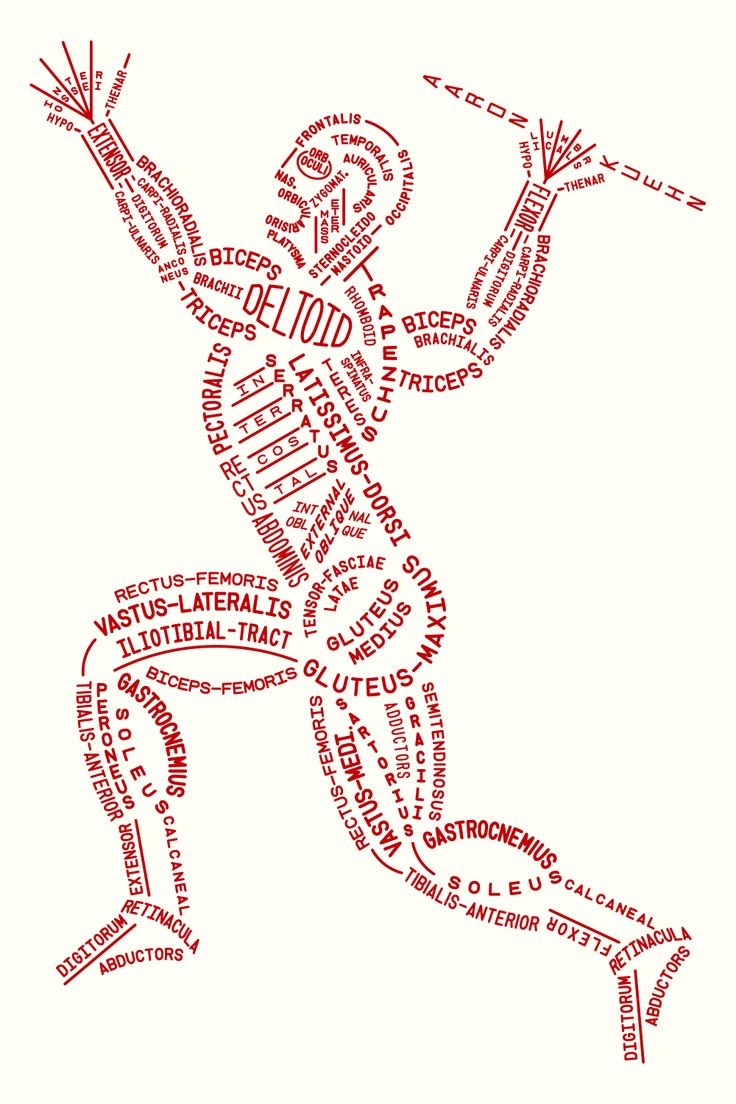
The Bones in our Body
- Each hand contains 54 bones. This includes the bones in the wrist.
- B-cells are so-called because they mature in the bone marrow, whereas T-cells are so-called because they mature in the Thymus gland.
- Although we have 206 bones in our body, babies have an amazing 270! When the child grows up, the bones eventually fuse together to make the 206 that we have as adults. This is why breast feeding and milk intake is essential.
- Without muscles, we wouldn't be able to stand up, or lift anything. They help our bones with structure, but also with movement.
- You need vitamin D to help process calcium, which is not created in your body. Without one, the other will not be able to be absorbed.
- A baby's knee is purely cartilage until they are up to 5 years old. This means that they have cartilage knees until it starts to ossify - turn from cartilage to bone.
- Some ribs in our rib cage are called false ribs. This is simply because they do not attach to the breast plate (sternum).
- There are a series of cavities in the skull that allow bloodflow and other mechanisms to pass through. These are called foramina.
- Lumbar areas of the back provide the most common issues with back pain. This is because they are usually overstretched, and manual handling techniques are not applied to workforces.
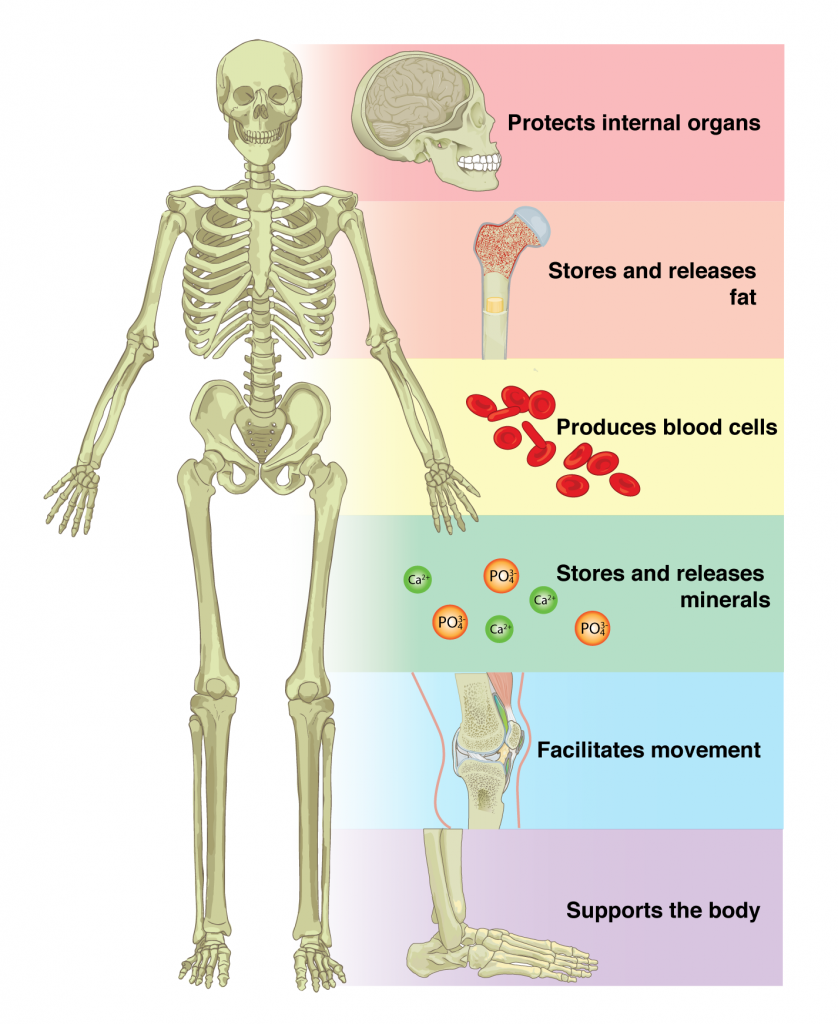
Health & Well-being
- Drinking alcohol is a pastime that has gone on for centuries, but if it was a new thing that people were doing today, it would be considered a dangerous act and possibly be banned.
- If you maintain good relationships with people, along with maintaining a healthy food lifestyle, your overall lifestyle of health and well-being will dramatically improve.
- Where there are households with both parents that smoke, children living in the same house have a higher risk of around 72% of respiratory illnesses, as well as a higher chance that they too will smoke when old enough.
- Maintaining a good health and fitness level is not the only aspect of maintaining your health and well-being. As well, you have to consider your social health, and your personal mental health. These need to be addressed sometimes to keep you healthy and happy.
- Due to increased use of sedentary methods of play (video games), and higher obesity rates, children in today's age are more likely to live less years that their parents.
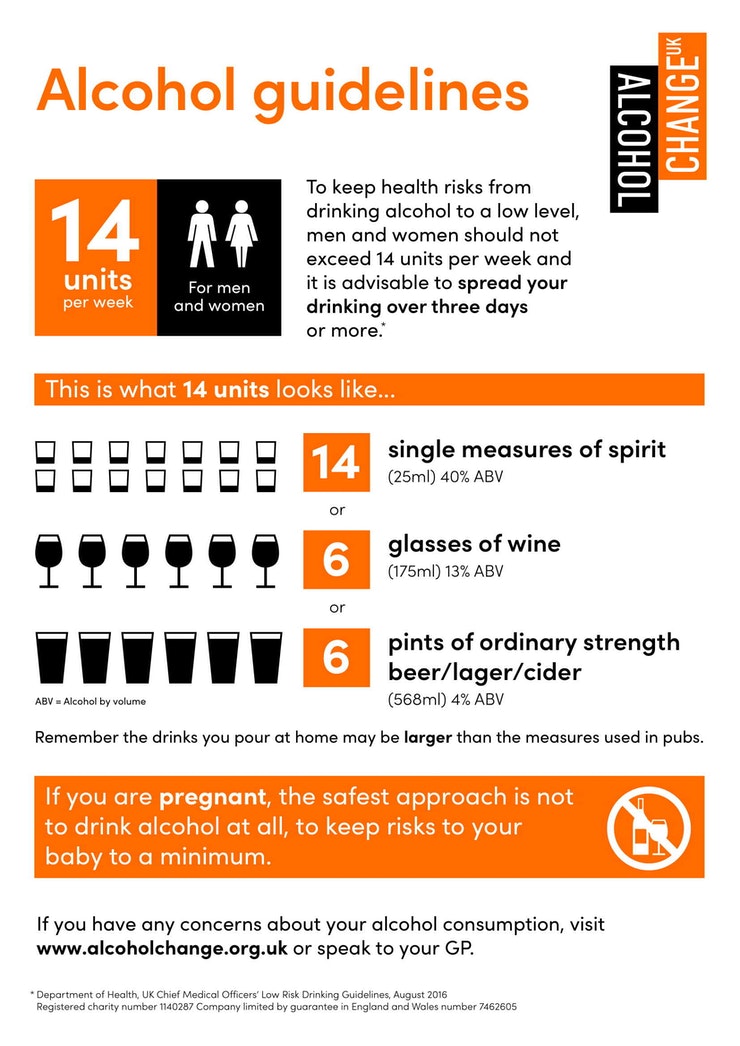
Three Domains of Life
- The Archaea kingdom is itself split into three different parts, including methanogens, halophiles and thermophiles.
- It is better to use hand towels to remove bacteria from your hands when you wash them than to use an automatic hand dryer. This is because the bacteria is already in the moist environment, whereas using the towels, being dry, they decrease the amount by up to 65%.
- The human genome shares 50% genetic information with a banana. It is mainly the proteins, rather than the DNA though.
- A series od rules is set out for each kingdom. While it may seem some organisms should be in one kingdom, they are placed into other kingdoms depending on what criteria they present for other kingdoms.
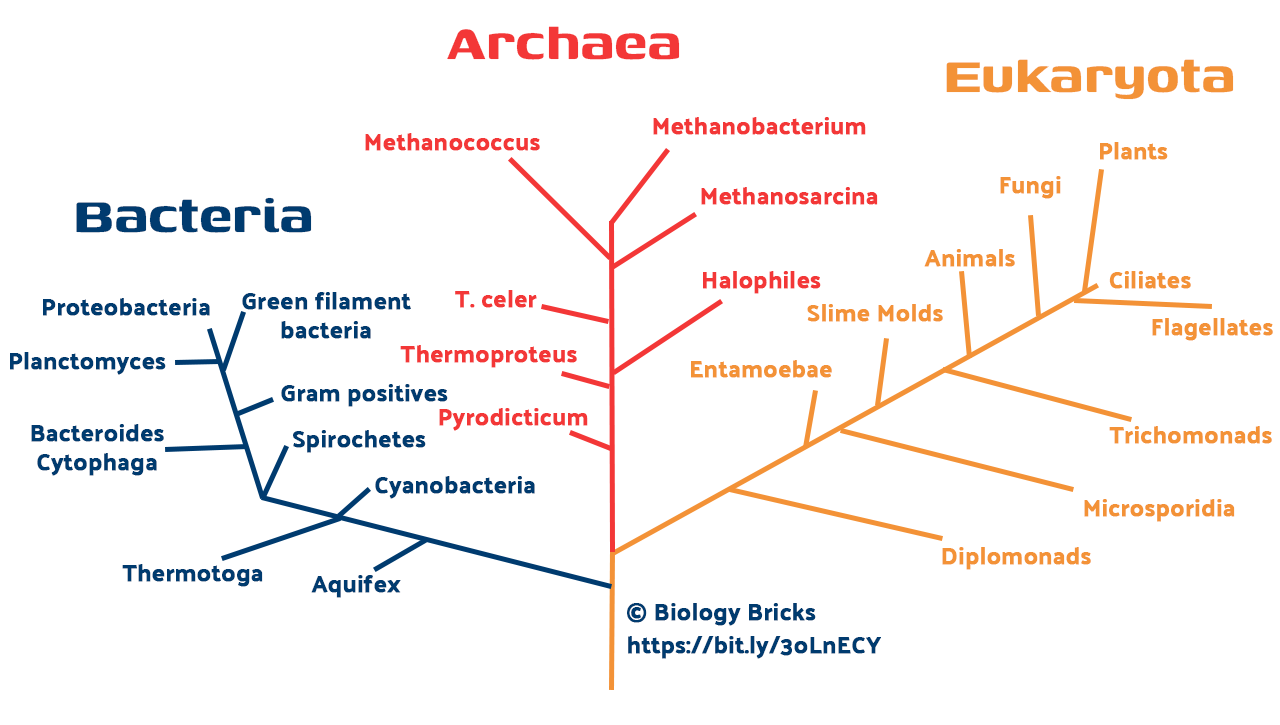
Plants & What They Do
- The term 'bio' means life, so any factor that is biotic is from another living organism. Abiotic means non-living, so any factor that is abiotic is a non-living effect.
- Because blackcurrant plants were banned in the USA due to them increasing risk of passing on disease in the early 1900s, many Americans do not know what the flavour of blackcurrant is like, unless they have bought products from other countries with it in (such as Ribena).
- If you place an ice cube from your freezer on to a worktop surface and place a thermometer beside it, you can visibly see the temperature increase and decrease.
- Apples are all clones. Because the fruit just grow as they want, it is difficult to get conformity (which is what supermarkets want). Farmers graft the branches from successful years to a young tree at the right time in its life to maximise the conformity results.
- While cellulose is abundant in the cells of plants, as it creates a thick skin. Trees create even more of it to form bark, an external integumentary system to protect it. This is also present in the human body, and can cause illness if untreated or maintained.
- Osmosis doesn't just occur in plants. It can also happen in animal and human cells. It is the main reason for active transport in eukaryotic cells.
- It's not just trees that produce the oxygen we breathe. In fact, up to 70% of all the world's oxygen production is undertaken by photosynthetic phytoplankton, an aquatic producer.
- A disease that can be spread from a plant to humans is called a zoonotic disease. They are similar in type (bacterial, fungal and viral) to what can be passed between plant to plant or human to human, and are also passed by the same methods.
- Bananas are unable to reproduce, and have no seeds in them as a result. They are cloned by placing old plant branches onto the new plants when the time is right.
- All organisms respire. Whether it is a plant, animal, human or fish, they all respire. They all create the ATP from organic molecules anaerobically. Aerobic respiration requires the intake of oxygen, thus ventilation and gas exchange is needed.
- A plant can be considered to be nocturnal. During the day, it will open it's stomata cells to take in gases needed for photosynthesis, whereas at night it will close these cells to preserve water ready for the next day.
- There are a total of five tropisms that affect plants - gravitropism, phototropism, thigmotropism, hydrotropism and thermotropism. They each have positive and negative feedback in response to each of these.
- A mature oak tree is capable of soaking up to 50 gallons of water a day. It is often cited that one of the reasons the UK has more flooding is because the oak trees have been chopped down to make way for agriculture or housing in the area.
- There are two types of active transport - primary active transport being used by energy called ATP, and secondary that uses electrochemical ions.
- Aphids suck the sap out of plants. This is done by sticking a tube into the plant's phloem and removing it from there. Ants farm the aphids as they are sweet, carrying the sap from the plants.
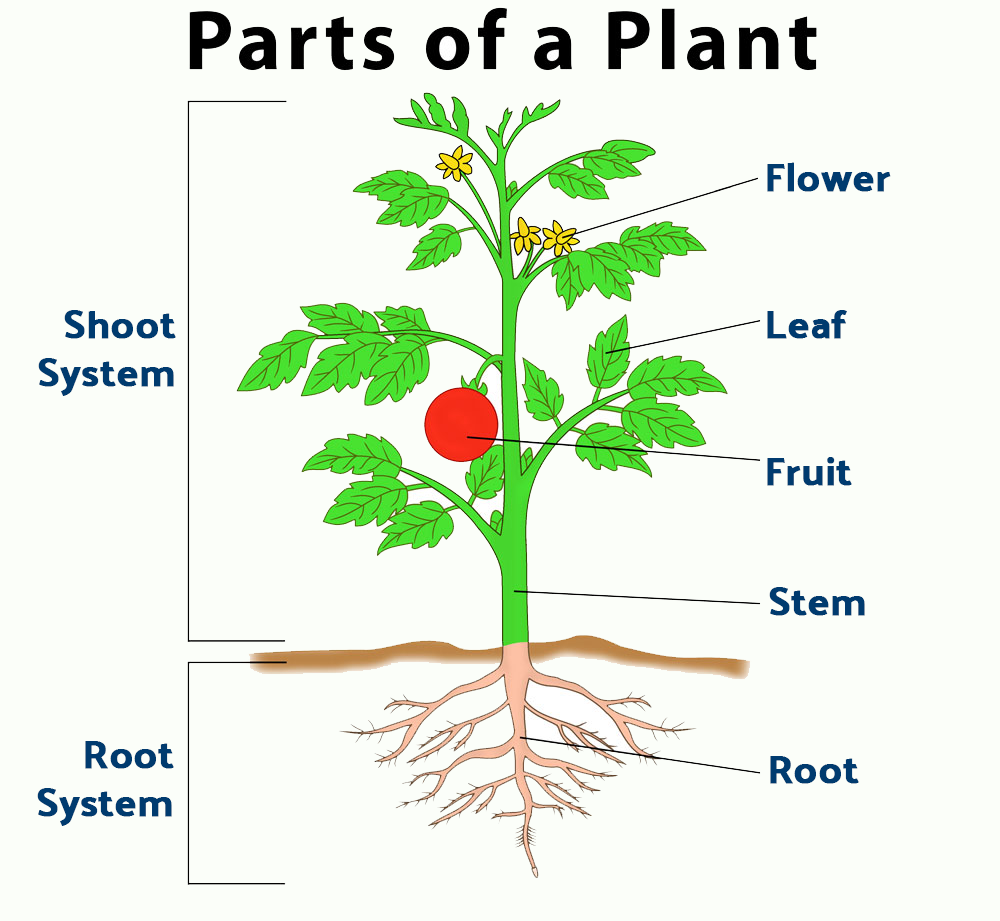
The Environment
- A polar bear has black skin, and clear fur. We all know it to have white fur, and we assume they have pink skin. The black skin allows the polar bear to warm in the sun, and the clear hairs of the fur allow for the sun to go through and also provide warmth, as they are hollow.
- A wolf pack will walk for miles, but the alpha will always walk behind the rest. This is because the sick will be at the front, and the rest will follow at their pace. The alpha will be able to see all of the pack and move appropriately if needed.
- The majority of deforestation in the Amazon rainforest is due to cattle grazing. Farmers want to use the land to rear animals, so they remove trees to make space.
- A cow can create methane, which is changed back to carbon dioxide for plants to consume. The fossil fuels create almost 10 times as much carbon dioxide as cows do.
- Food production amounts to 83% of carbon emission each year. This is either because it is transported to and from places all over the world, or because animals release methane and other gases into the atmosphere.
- In the UK, we use a 5-system set of kingdoms, whereas other countries use a 6-system set. This is due to scientists having added extras in upon research of microbiology.
- According to the United Nations Food and Agrilculture Organisation (FAO), an estimated 18 million acres (7.3 million hectares) of forest are lost each year.
- Half of the world's species live in rainforests. This is because they are near the equator, and the conditions are always warm and wet. There is an abundance of every type of organism that lives there.
- Even though we sample areas, and make actions to conserve areas that have seen decline, the bigger picture is that our habitats and environments are being depleted for several reasons, but that they contribute to climate change.
- The word amphibian comes from the Greek word meaning 'double life', and this makes a frog's life adaptable to water and land. Although they have lived through five different extinction points, they are now on the verge on being fully entinct.
- Extremophiles can help us find life on other planets. The fact they are small means that we could find life in ice or other substances on planets like Mars or the moons of Jupiter.
- Sixty percent of food eaten in the UK is grown here, with numbers in millions of staples like potatoes, wheat and barley produced on our own land.
- A food chain can have multiple prey and predators in it, but will then be classed as a food web, with interlinking animals and species.
- In the Middle East, a grain storage was uncovered that is as old as 10,000 years old. Even they were aware of food security in case of a drought or some other factor.
- A fossil has to meet some requirements before it is classed as a fossil - they are defined as the preserved remains, traces or imprints from an organism. It also requires to be at least 10,000 years old.
- The ozone layer has a hole in it. It was discovered in 1985, and continually grows and recedes during the year. It works like the ebb and flow of a tide, getting thinner between September and November.
- Although many original names came from both Latin and Greek, the majority of names made for new species are consisted of Latin, and are also based on the location they are found, as well as the name of the person who found them.
- A "Jack O' Lantern" origin story is that during the 1600s it was a nickname for strange lights over the top of peat bogs. They were mistaken for ghosts and fairies. It wasn't until people started carving turnips in the 1800s that the familiar name got it's modern meaning.
- When NASA launch a rocket or space shuttle, it produces 28 tonnes of carbon dioxide. Compare this to a car's production over a month, which is around half a ton. The amount of pollutant that this generates as much as the size of New York City over a weekend.
- The guy that designed the recycling logo was given $2,000 to make the design, and also made the design out of old arrows and arc from a previous presentation he had lying around, making the logo true to its name.
- The opposite of deforestation is aforestation. Where there are no forests, one can be planted, and this creates a carbon sink, which draws in and holds onto carbon and distributes it into the soil.
- There is much debate on whether humans are classed as an apex predator. While there is no real evidence of being preyed on, because we have such varied cultures, it could be considered true or false depending on where you live.
- The earliest account of recycling rubbish was in 1031 in Japan. They found a way to recycle paper and sell it on as new in shops.
- Once a tree transpires, the water from this process evaporates, so a tree also adds to evaporation.
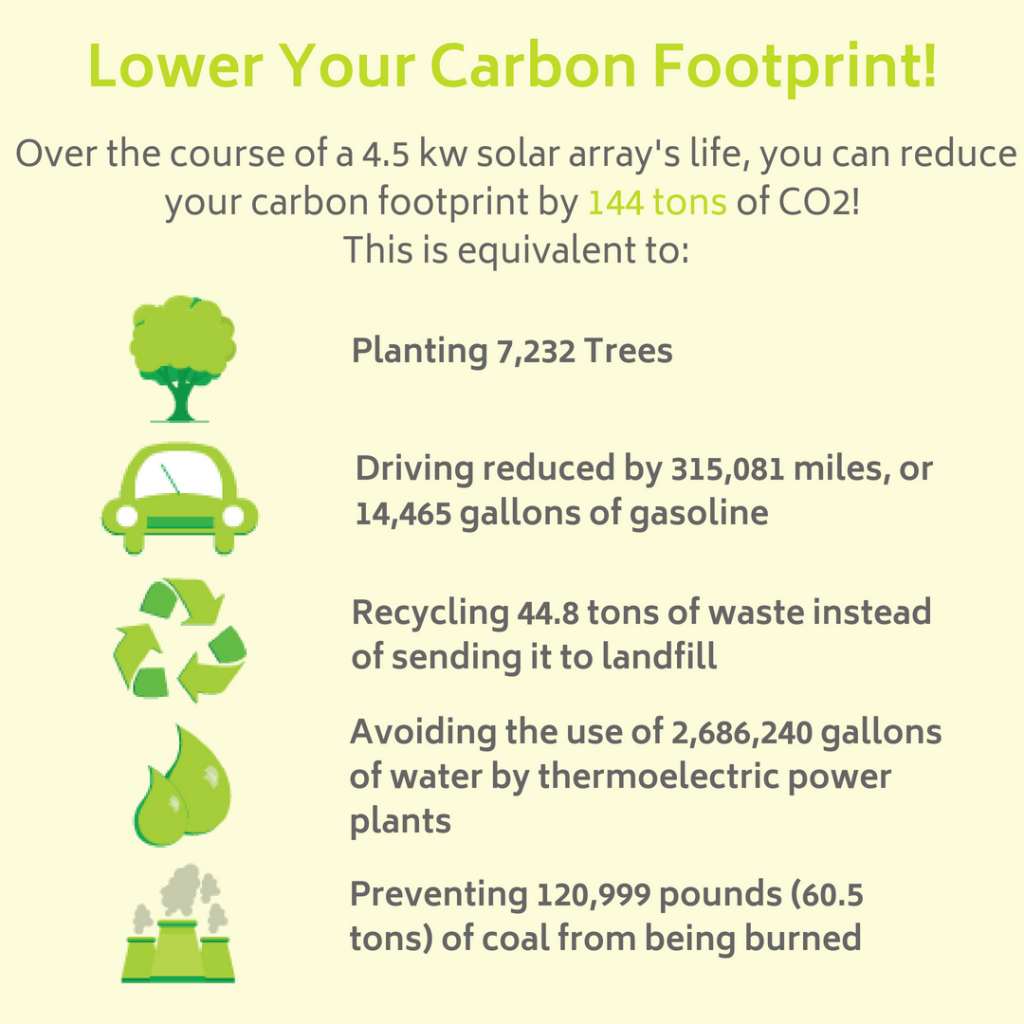
Our Planet: Earth
- Point Nemo is a place in the Pacific Ocean, and more often than not, astronauts in the ISS are the closest humans to it. The nearest inhabited landmass to Point Nemo is over 1,670 miles (2,700km) away, whereas those on the ISS are a mere 258 miles (416km) away.
- Although the weather changes depending on the season, seasons may start earlier or later than this. For example, winter doesn't start proper until December 21st, but it is usually cold long before this.
- Up to 90% of the Earth's sulphur is in the core of the planet. This explains why the mass of the core is lighter than originally expected.
- The Moon has a full orbit around the Earth in 27.3 days, but it takes slightly longer (29.5 days) for it to show it's eight different phases, called a lunar month.
- The arrangement of atoms in a rock defines how hard the mineral is. Graphite and diamonds are made from the same element, carbon, but their hardness is different due to their internal structure.
- Erosion can have damaging effects on aquatic life and can also cause sedimentation. This can make it difficultfor aquatic life to breathe and survive.
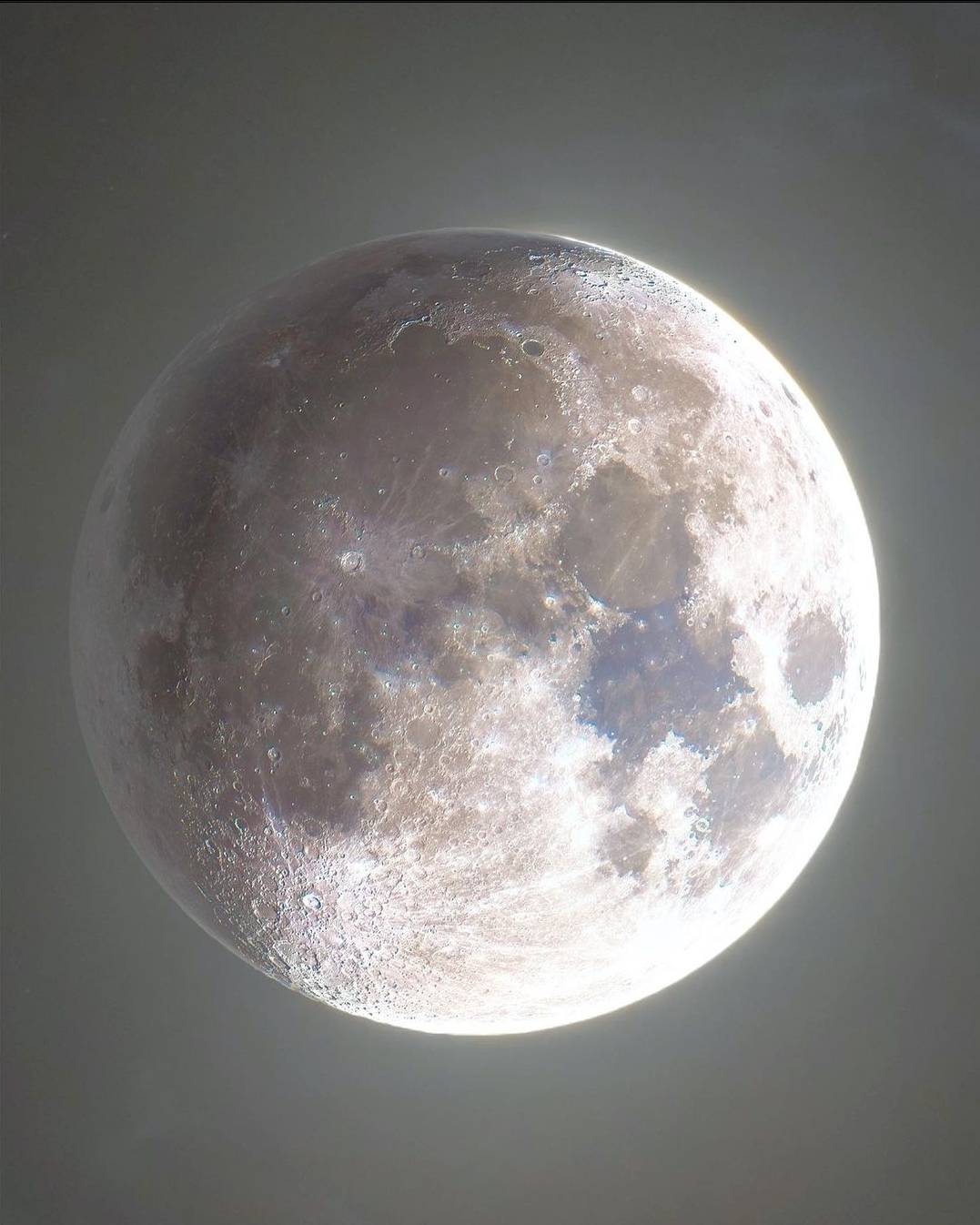
The Universe
- Because there are a whole host of materials in asteroids, the prospect of mining them for valuable metals or minerals that are within them is very desirable, but not yet a reality.
- The Earth is not, in fact, round. By 0.3%. Which is very much minimal. But, at the equator is is that much thicker than the rest. It still looks circular and round from space though.
- Gravity is able to bend light. If a light source is heading through space, for example, and it encounters a black hole, it will bend through the gravitational pull of the hole. This is due to a theory called general relativity, a theory given forward by Albert Einstein. His theory means that we know that light travels along geodesics, which in everyday life, we as humans still see as straight lines, but that can be curved by gravity.
- There is no boundary between atmosphere and the ocean of liquified gas in the lower layers of Jupiter. This is due to the tremendous pressure; the gas simply changes in viscosity the deeper you get into the planet.
- There are five objects in the Kuiper Belt classed as dwarf planets: Pluto, Eris, Ceres, Haumea and Makemake.
- A Danish scientist named Olaus Roemer discovered an approximate speed of light, some 300 years or more ago.
- The surface gravity on Mars is 38% that of Earth. For example, if you weigh 100 pounds on Earth, you would weight only 38 pounds on Mars.
- Mercury moves around the Sun at 112,000mph (180246.5km/h) and it's elliptical orbit means that it varies between 29 million miles and 43 million miles (47-69 million kilometres).
- Pluto and Neptune's orbits cross over, but they never collide.
- Although original theories provided the thought that the Oort cloud contained materials from the explosion of our star and the beginning of the Solar System. It is, in fact thought that the cloud could be the product of other stars that have formed in the past, and not close to the Sun.
- Of all eight planets in the Solar System, we (Earth) have the highest density. Mercury has the second highest, and Venus has the third.
- It takes 5 hours for sunlight to hit Pluto, compared with Earth, which is 8 minutes.
- Titan, one of Saturn's moons is the second largest in the Solar System, after Jupiter's Ganymede. It is also bigger than Mercury.
- One person has played golf on the Moon. Alan Shepard, a member of NASA and who walked on the Moon in 1971. When he did, he decided to play with the Moon's gravity and took two shots with a homemade golf club. The balls were never retrieved.
- The Sun holds about 99.86% of the entire mass of the Solar System, but is still just a mass of gas and has no solid surface.
- The radioactive element Uranium was named so after Uranus in 1789, just eight years after Uranus was discovered.
- Venus is hot enough to melt lead - it easily reaches temperatures in excess of 425° Celcius.
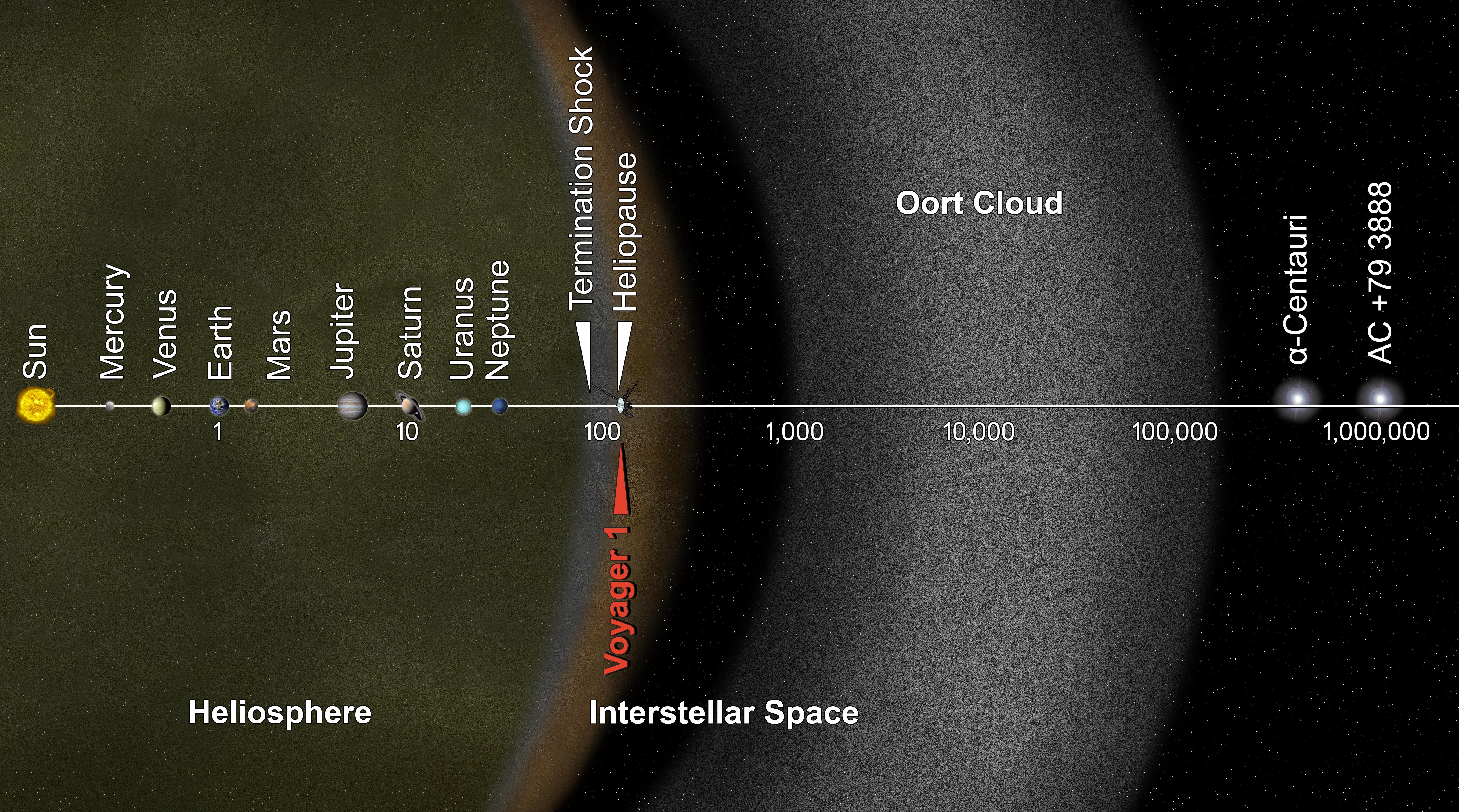
Energy
- Around 75% of the energy use to power our electronic devices is consumed when the products are turned on or off. It is actually better for you to leave them on constantly.
- Hydroelectricity is the most widely-used renewable power source. It accounts for more than 54% of the global renewable power generated, and 18% of the world's total power generation.
- Sir Isaac Newton did not discover the law of gravity with an apple. He simply discovered it through use of other objects that were sitting around him at the time.
- Another type of force is known as applied force. When you push a friend on a swing, for example, they will move in the direction you push them.
- Nels Garden and his team were doodling the symbol for radioactive materials, when it was confirmed that it would be needed to display. This was in 1946, and uptake gained from 1948 onwards.
- Stopping distances double in wet conditions. In icy conditions, it is as much as ten times greater. At 30mph, that is typically around 230 metres.
- The fastest speed a human has travelled is during 1969 in the Apollo 10 mission. They reached a speed of 39,897km/h (24,790mph) during orbit around the Earth.
- A good instinct when driving is to watch the car in front. Pick a point, and if it takes you more than 2 seconds to get to that point from the moment the car in front left it, you should have enough distance to stop.
Electromagnetic
- Although we are all used to it, we shouldn't capitalise the abbreviations for AC and DC. They should be ac and dc.
- Circuits work in both forms of power - direct current (DC), or alternating current (AC).
- We always assume metals will be attracted to magnets. But this isn't the case. Some are repelled by them, including zinc and silver.
- The British Standard kitemark has gone digital. Since 2014, they have appointed websites and applications that handle data securely and in the correct manner with their approval. Such places include Barclays Pingit.
- Electromagnets were first discovered in the 19th century by Danish physicist and chemist Hans Christian Ørsted.
- Li-Fi is a type of wireless communication standard that uses light frequencies in the visible, ultraviolet and infrared parts of the electromagnetic spectrum.
Elements & the Periodic Table
- Solder is a type of alloy that is used to bond metals together. It is used for many purposes (circuit boards, jewellery), and is an alloy of lead and tin.
- Everything in the universe is made up of atoms. Literally. An atom is the smallest unit of matter.
- A compound can be mixed with another compound to create a new compound. The chemical bonds when reacting together are broken and rebuilt as a new compound.
- There is a metal called vanadium dioxide that allows the conduction of electricity, but resists creating heat. This defied our understanding of physics.
- Diamonds formed around 100 miles below the surface of the Earth, and have been carried up from volcanic movements and eruptions.
- Elements are grouped together in their periods on the periodic table. This is becase they have similar properties.
- During the 1600s, brewers in England dried malts using heat generated by coal, but the flavour didn't go down well. So, they created a process that used an airtight oven. This process was then adopted by the mining community who started the coke-making process to make iron and steel.
- The name metal comes from the ancient Greek word 'metallon', which means to mine or excavate.
- Ice has up to 15 different structures, depending on pressure and temperature.
- A mixture can be either homogenous or heterogenous. A homogenous mixture is one that is uniformly combined and distributed, whereas a heterogenous mixture is one that is the opposite.
- Although Dimitri Mendeleev is cited at being the modern founder of the way the periodic table looks, he wasn't the first to make one. In 1864, Lothar Meyer published a periodic table that described the placement of 28 elements.
- PVA glue is a liquid at room temperature, and is used as an adhesive, unlike most other polymers, which are solid at room temperature.
- You can hold a piece of Gallium in your hand and it will physically melt before your eyes.
- Fractional distillation is a type of distillation that allows the separation process of substances with similar boiling points to be achieved. This is present in crude oil separation.
- Mines have had a rough past, with miners in the UK constantly striking due to poor conditions, and low pay. While the economy was boosted, it was not very feasible for a miner to work the long hours they did for the money they got.
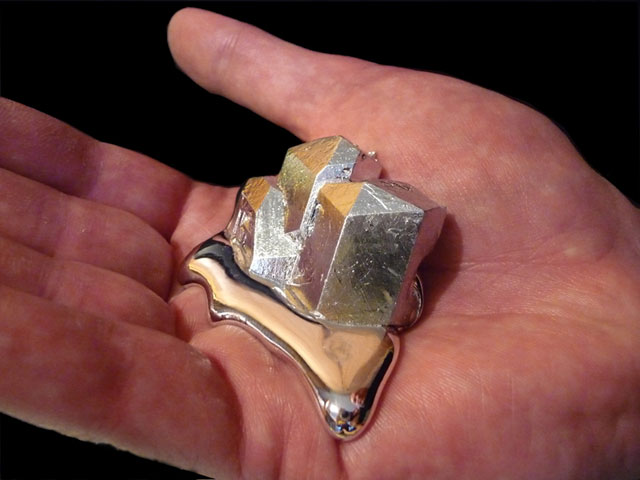
Earth's Atmosphere
- Acids react with metals. When they do, they can produce hydrogen. They can also perform double displacement, which creates a precipatate, or solution.
- You can measure the acidity or alkalinity of a liquid by using the pH scale, which runs from 0 to 14 - acid is considered being less than 7, and alkalines (bases) being more than 7.
- Crude oil is extracted from sedimentary rock, but is in both liquid form and solid form. It is then stored with a bobbing lid to protect it from exploding.
- Earth has had three atmospheres: the first (primordial) one was predominantly hydrogen-based, with trace amounts of other gases; the second was mainly nitrogen and carbon-dioxide, while the third one is what we have now, with 78% nitrogen and 21% oxygen.
- Complete combustion is a purely exotehermic reaction, where the result is the production of heat.
- Without the greenhouse gases being present, there wouldn't really be an atmosphere to speak of, and the planet would be very cold - around -18° Celcius!
- The most easily available exothermic reaction is between detergent and water. Though it may not seem like a lot, it causes an exothermic reaction that makes heat while it washes your clothes.
- Here in the UK, we are told not to drink hot water from the tap. This is because it has usually sat in a cistern in the loft (or attic, if you prefer) for some time, and is not connected to the main water supply, so is not considered potable.
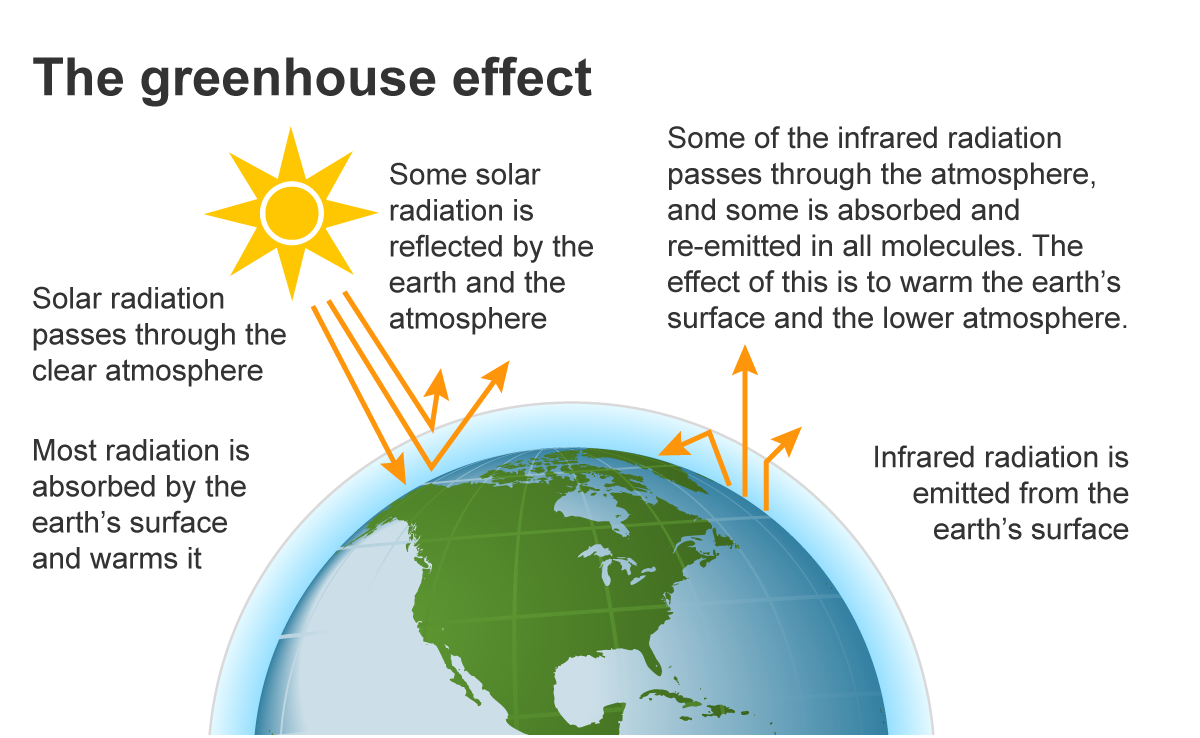
Miscellaneous Facts
Here are the list of other facts I've shared on social media
- During the Autumnal equinox, we see a full moon. This is sometimes referred to as the Harvest Moon, and is visible earlier in the evening, which gives farmers more time and light to harvest their crops.
- The Lunar New Year is given one of 12 zodiac animals. 2023 is the year of the rabbit.
- Due to the Earth's rotational bulge, the highest point on Earth is not Mount Everest, but Chimborazo, Ecuador.
- Inside your mouth, there are more bacteria than there are people in the world. There are 7.8 billion people in the world.
- The life cycle of the skin is around 27 days. That means in one lifetime, we shed skin up to 1,000 times. Not all at once though, obviously.
- Hairs on a man's chin grow faster than anywhere else. If men don't shave at all, it would grow to an astonishing 9 metres long!
- Sharks have to constantly swim in order to survive. The constant flow of water is needed to enter their gills. If they stopped, they would drown.
- There are a total of 35,000 species of spiders. But it's OK, only 27 of them are able to poison and kill a human.
- There are around 100 lightning bolts that strike the Earth on a daily basis.
- Wilhelm Rontgen won the first Nobel Peace Prize in 1895 for discovering X-rays.
- If you were to lay out all the blood vessels in our body, they would stretch to 60,000 miles (96,500 kilometres).
- Water tension holds together a sandcastle. Too much or too little and it falls apart.
- Sound is visible. When you see vibrations (from a speaker, perhaps), you are actually seeing the sound.
- We age less in space than on Earth. This is due to a theory called time dilation, which is a theory based on gravity and velocity.
- Headphones work in a similar fashion to a microphone when placed in the microphone input jack.
- We use an estimated 80 trillion aluminium cans every year. Just as well they can be recycled.
- Glass can be recycled, but if left in the open, it can take up to 4,000 years to fully break down.
- It's not just rural areas that have the Ecosystem - cities also have one. They have a diversity of their own.
- Although we treat biomes as being large, like a desert or rainforest, bacteria also have biomes. They are called microbiomes, and are the size of their host.
- The Park Grass Experiment is one of the longest scientific experiments running. It started in 1856, and it studies the effects of fertiliser on hay fields.
- When aluminium is exposed to gallium, the unique chemical reaction creates a strength bond and feel of thick wet paper.
- What we see of an iceberg is only 11%. The other 89% is under water.
- A radioactive element called Astatine rapidly disintegrates. We have no idea what colour it is, either.
- When we sleep, we don't swallow. But in order to not drown in your own spit, our salivary glands slow down.
- Activities by animals are classed in three ways: diurnal, nocturnal and crepuscular. That is during the day, at night and at dawn and dusk.
- Spiders do not move. They have no muscles. They simply pump blood to the areas they want to move.
- Time and space around a black hole means that if you fall in, you could exit it before falling in. You would then see yourself enter the black hole to repeat the cycle.
- You feel tired after a meal because your stomach is full, causing your diaphragm to push against your lungs. This makes you breathe less, hence the tired feeling.
- Although a dragonfly has six legs, it is unable to walk.
- When you cut an onion, it releases sulfuric acid. This results in tears being made due to it being expelled from the eyes.
- The average human walks the equivalent of three times around the Earth in a lifetime.
- If our bones are buried in a neutral pH-soil or sand, it can last for thousands of years.
- An adult can take on average 23,000 breaths a day. And now you're realising you're breathing.
- When we die, our brains continue to work for up to 37 hours post-death. This is most likely down to a series of chemical reactions.
- Colourblindness is more common in men than women. It's all to do with the X chromosome, and the fact a man only ever has one of them. If a woman has one X chromosome show the colourblindness attribute, the other one can overrule it.
- You can't burp in space. Gravity keeps your food down when you do it on Earth. In space there is no gravity, so if you burp, everything comes up...
- Water can be all three states at once, given the right conditions. It has to be 0.1 degrees Celcius, and 0.006 atm pressure.
- On other planets such as Neptune, Uranus and Saturn, it can rain diamonds, as the pressure is so intense there it forces carbon to compress.
- Humans have genese from as many as 145 other species, which have jumped from bacteria, fungi, and other small organisms.
- According to research undertaken at McGill University in the U.S., bananas are radioactive. They contain potassium, which decays like uranium and plutonium. Don't worry, you'd have to eat 10 million in one sitting to die from it.
- January 1st was not the original date celebrated for New Year's Day. The Romans used to celebrate it on March 1st.


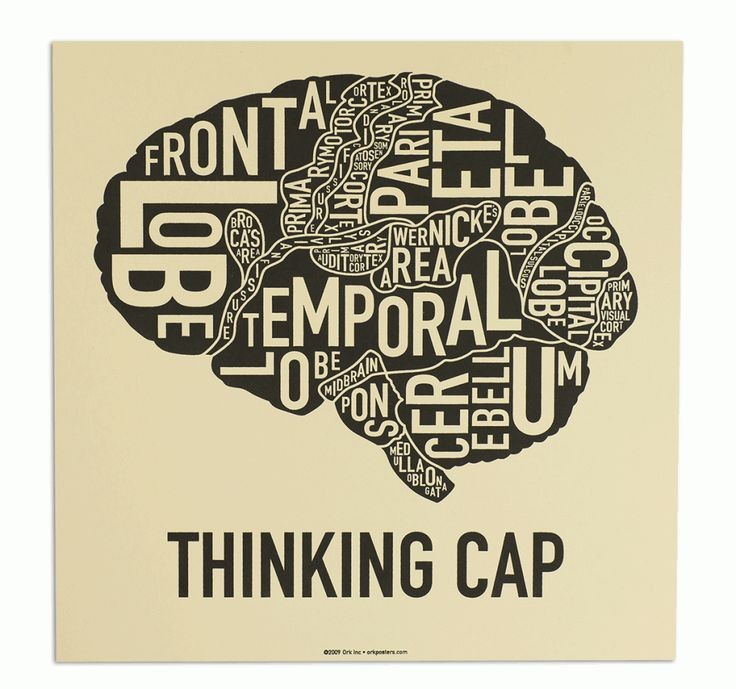





 Return to the top.
Return to the top.